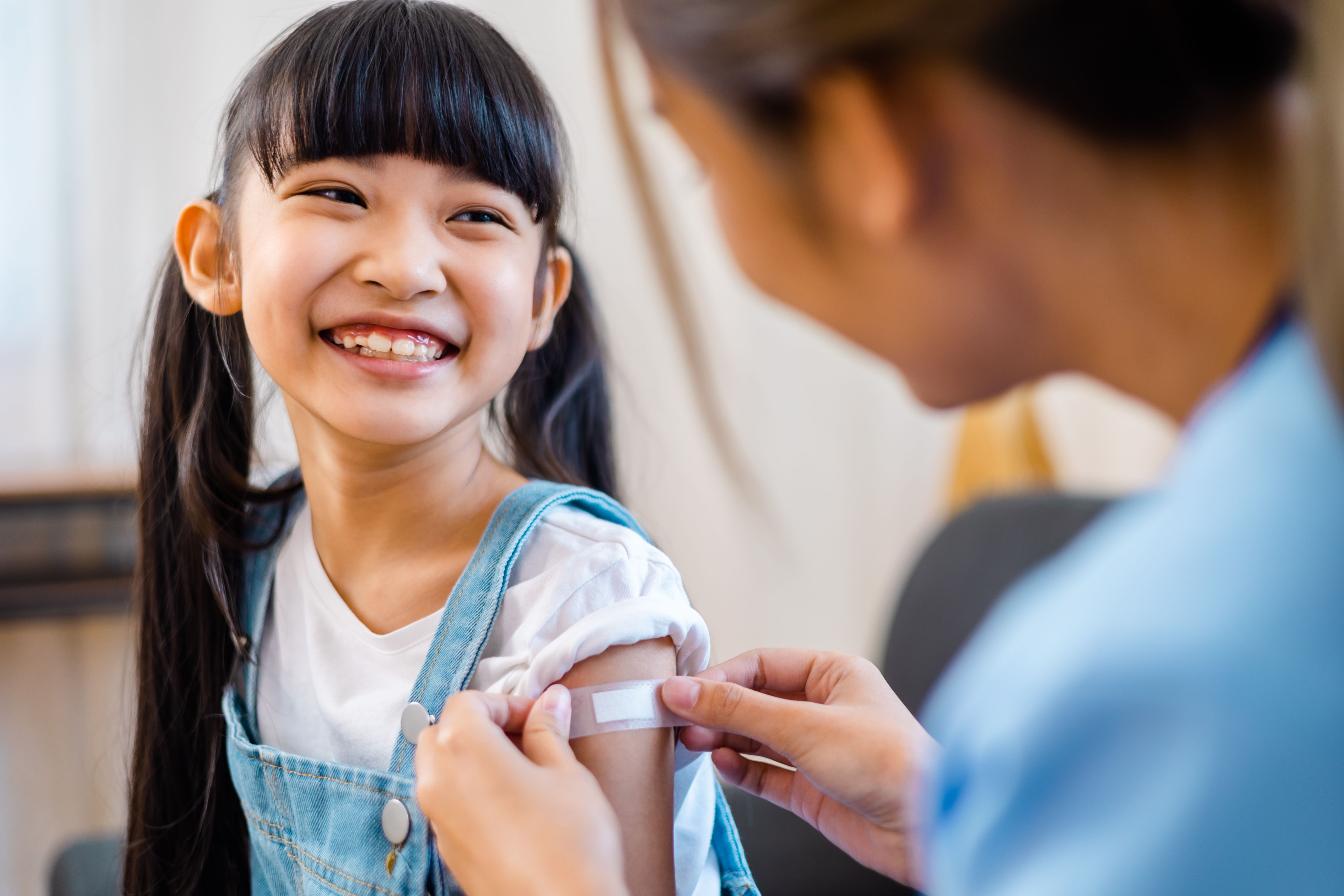- Center on Health Equity & Access
- Clinical
- Health Care Cost
- Health Care Delivery
- Insurance
- Policy
- Technology
- Value-Based Care
Two Doses of Influenza Vaccine Effective in Children Younger Than 3 Years
The second dose of influenza vaccine was less effective overall when the studied cohort was expanded to any child younger than 9 years.
Although protection from influenza was not significantly increased when children younger than 9 years received a second dose of the vaccine, those younger than 3 years had improved protection when receiving 2 doses of the vaccine, according to a new review.1
Approximately 20,000 children are hospitalized for the flu each year.2 Hospitalization rates are particularly high in children younger than 5 years, and they are prioritized for flu vaccines because of this and their potential to spread the virus quickly. Vaccines are recommended to those 9 years and younger in 2 doses when they are naïve to the vaccine and in 1 dose for every year after that.3 This review aimed to evaluate the efficacy of the vaccine taken in 2 doses compared with 1 dose in flu vaccine–naïve children.
Reduced efficacy for the second dose of the flu vaccine was found in those older than 3 years. | Image credit: anon - stock.adobe.com

EMBASE, Medline OVID, and CINAHL were searched for studies from September 14, 2023, to March 24, 2025. Studies that included children aged 6 months to 9 years who had never received a flu vaccine were eligible to be included. Those that were not peer-reviewed, were conference abstracts, or were modeling and cost-effectiveness studies were excluded. Efficacy and vaccine effectiveness acted as the primary end point of the review.
A total of 51 studies published between 1998 and 2024 were included in the analysis. The studies tested the efficacy of inactivated influenza vaccine (IIV) and live attenuated vaccines (LAIVs) during their analysis.
Efficacy of IIV was tested in 25,931 participants, where pooled vaccine efficacy of 2 doses was 52% (95% CI, 43%-60%) for children younger than 9 years and 51% (95% CI, 41%-60%) in children younger than 3 years. A total of 16,145 patients were tested for vaccine efficacy of LAIVs, with a pooled efficacy against any influenza of 51% (95% CI, 39%-60%) in 1 dose and 82% (95% CI, 69%-89%) for 2 doses.
Vaccine effectiveness also was measured in vaccine-naïve patients. The pooled vaccine effectiveness was 35% (95% CI, 18%-48%) from 1 dose and 43% (95% CI, 34%-50%) from 2 doses for children younger than 9 years taking an IIV vaccine. This effectiveness dropped to 14% (95% CI, –9.8% to 33%) for 1 dose compared with 41% (95% CI, 29%-51%) for 2 doses in children younger than 3 years. There were insufficient data to compare vaccine effectiveness in 1- and 2-dose LAIVs in children.
Partially vaccinated children who were younger than 9 years had a vaccine effectiveness of 32% vs 54% in those who were fully vaccinated against any influenza. Vaccine effectiveness dropped to 19% in children younger than 3 years who were partially vaccinated compared with a vaccine effectiveness of 43% in those who were fully vaccinated.
There were some limitations to this study. Notably, there was a small number of estimates to use for the analysis, which prevented a stratification of the analysis that would have allowed for assessing the impact of a second vaccine dose when accounting for the season or disease severity. The researchers could not separate those aged 3 to 9 years into a different age groups due to insufficient data. Vaccine efficacy and vaccine effectiveness estimates could have been impacted by the different approaches to adjustment but weren’t taken into account for this study.
The researchers concluded that those who younger than 3 years benefited from receiving 2 doses of IIV in the first year of influenza vaccination, receiving more protection than those who receibed 1 dose. However, those who were younger than 9 years more broadly did not have a significant benefit from taking 2 doses of the influenza vaccine.
“Additional high-quality RCTs and observational studies with sufficient sample size and valid intervention definitions are needed to support a more definitive assessment of the impact of the recommended 2-dose schedule above a 1-dose schedule by age and disease severity for current influenza vaccines,” the authors wrote.
References
1. Goldsmith JJ, Tavlian S, Vu C, Regan AK, Campbell PT, Sullivan SG. Comparison of 2 doses vs 1 dose in the first season children are vaccinated against influenza: a systematic review and meta-analysis. JAMA Netw Open. 2025;8(10):e2535250. doi:10.1001/jamanetworkopen.2025.35250
2. Flu and children. National Foundation for Infectious Diseases. Updated September 2024. Accessed October 2, 2025. https://www.nfid.org/infectious-diseases/flu-and-children/
3. Health Care Providers. Seasonal influenza vaccine dosage & administration. CDC. October 16, 2024. Accessed October 2, 2025. https://www.cdc.gov/flu/hcp/vax-summary/vaccine-dosage-admin.html
